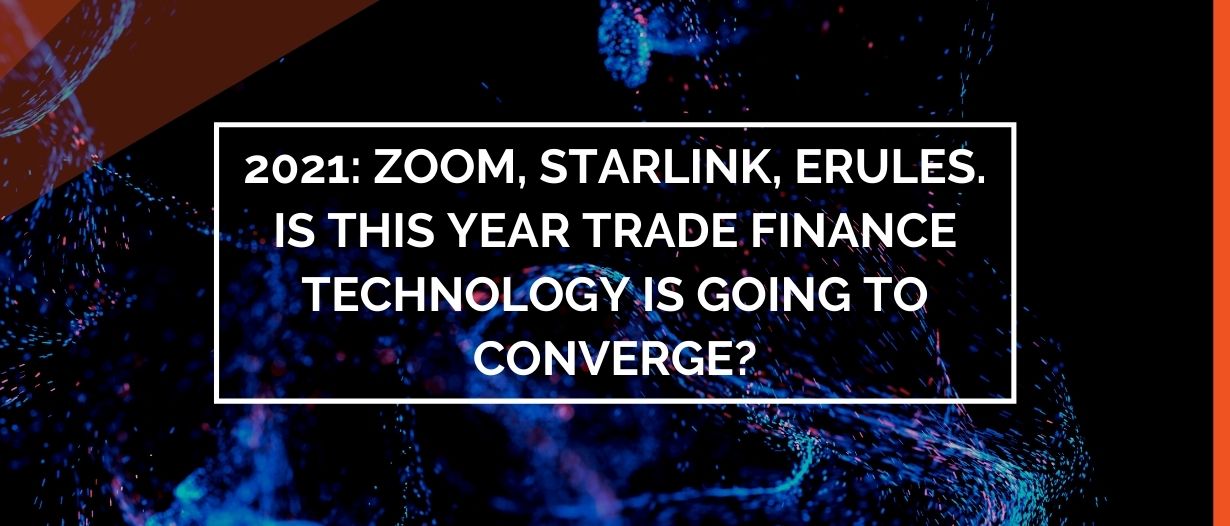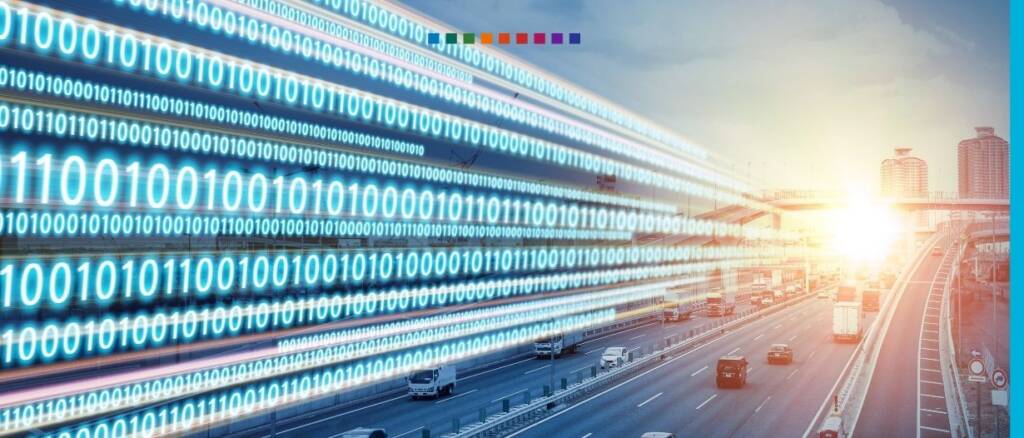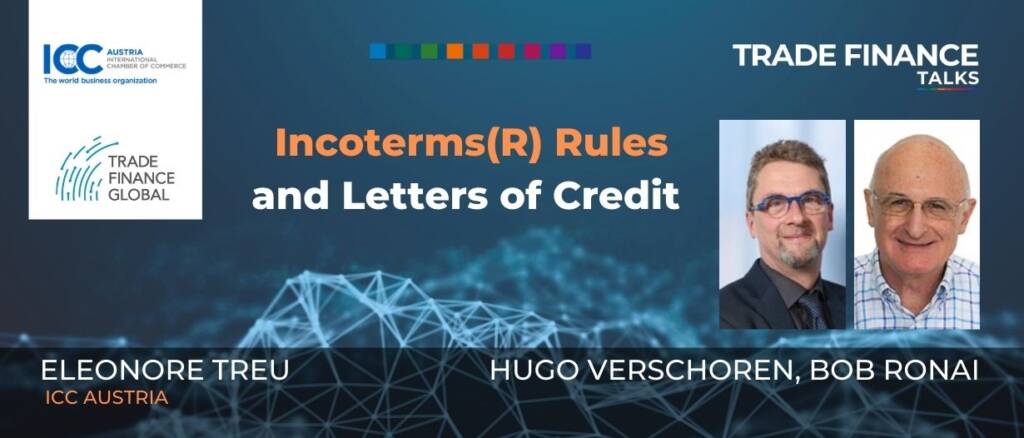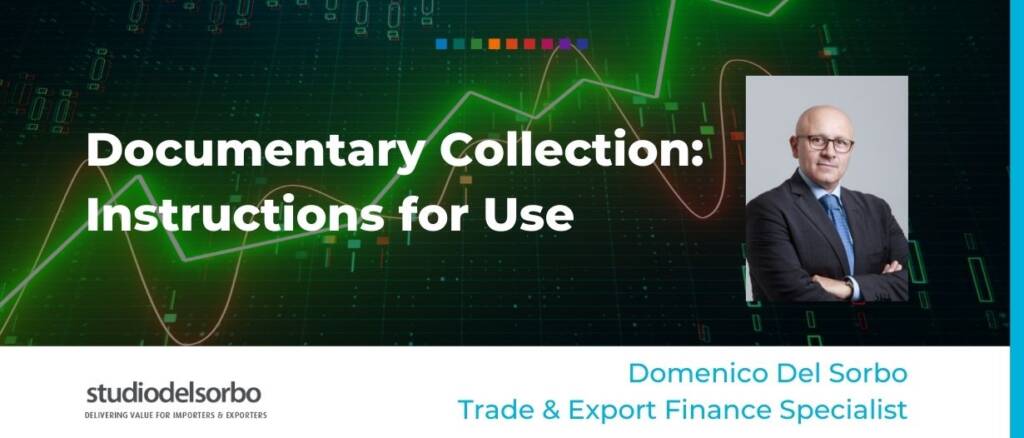Converging Trade Finance Technologies In 2021
Zoom / Starlink / eRules. In 2021 the trade finance world is going to be a whole lot more interesting (and fun) than it is today. The Covid-19 pandemic is accelerating trends and technologies that came online before January 2020 and were just getting traction. Paper to electronic records; web communications; global high-speed internet; trade transaction platforms; universal guidelines; and new trade finance instruments. The business to business (BtoB) trade model is giving way to the person to person (PtoP) trade model. Participant transparency, ie people, is going to replace institutional blind trust, ie banks.
The salient technologies that are converging include: (1) global high speed internet availability lead by SpaceX’s Starlink constellation; (2) global internet communications lead by Zoom Video Communications, Inc; and (3) global eRules guidelines for replacing paper with electronic records lead by the International Chamber of Commerce.
The 2021 trade world is going to be simpler, faster, and more transparent. Envision a trader in South Africa planning with his supplier in rural Kenya to ship containers of avocados from Mombasa to their distributor in Rotterdam for sale in Europe. The seller, distributor, and freight forwarder will all be online communicating together (Zoom), sharing their trade documents in the cloud in realtime with the buyer (Starlink); while arranging payment without paper or couriers (eRules). This will be done easily, quickly, at low cost, and without commercial bank involvement. This capability is already here in 2020, but will expand in 2021 with early adopters; reach 175 countries by 2022, and be the norm in 2023. Trade, like water, does inevitably and relentlessly flow downhill following the path of least resistance.

Starlink – Global Internet Broadband
Starlink is a satellite internet constellation under construction by SpaceX which provides satellite high-speed Internet access directly to customers from space. Starlink’s global coverage will not need ground cables, towers, or intermediate service provider infrastructure. The initial market is coverage worldwide where internet is either not available, not high speed, and/or unreliable. SpaceX, the parent of Starlink, is an American aerospace manufacturer and space transportation services company headquartered in Hawthorne, California, USA.
The Starlink Gen1 constellation will consist of 12,000 satellites in low earth orbit providing (at least) 100 mb download and 10 mb upload speeds with less than 50 ms latency covering the entire globe. The Starlink Gen2 constellation will consist of an additional 30,000 satellites. As of 3 September 2020 there were 715 satellites already launched. Commercial service is to be offered for North American latitudes by the end of 2020. Satellites are being launched at the rate of 50+ at a time on SpaceX’s Falcon 9 reusable rockets. The number will increase to 400+ at a time on SpaceX’s Falcon Heavy rockets in 2021. The Starlink satellite weighs approximately 260 kg and operates with phased array antennas connecting directly to individual ground terminals. There is no “last mile” that needs cable or WiFi connection from a provider. SpaceX Services, Inc. is providing the individual antennas that will connect directly to the Starlink constellation. Each fixed antenna is the size of a medium pizza; easily shipped to and installed by the customer. Initial manufacturing is underway for 5 million antennas.
Every importer, exporter, freight forwarder, carrier, bank, buyer, seller, manufacture, distributor, trading company, customs agent, inspection company, and government agency on the planet will have direct access to high-speed internet before 2024.
Starlink – Implications
All areas globally will have access to high-speed internet with communication capabilities and access to cloud eRules platforms. Peer to peer trade transaction capability will be available worldwide to everyone. With it will come the ability for exporters to bypass in-country commercial banks and deal directly with their buyer’s letters of credit and collections issuing banks. By presenting electronic records instead of paper that needs air couriers, exporters will be able to eliminate 20 days from the world average of 24 days from bill of lading to reimbursement day; while cutting bank fees in half by using one bank instead of two (issuing and negotiating banks).
Zoom Unified Global Communications
Unified communications refer to a single platform that delivers a variety of communications services. Zoom Video Communications, Inc. has become a world leader in providing simple, low cost, and reliable communication services worldwide. Full Internet communication includes: (a) video, audio, and web conferencing, (b) telephone voice communications, and (c) text messaging and chat. These communication services were primarily available for business to business (B to B) enterprises in metropolitan areas, but will be globally available person to person (P to P) with the advent of Starlink.
(a) Video, audio, and web conferencing.
The Zoom video conference call provides a simple communication solution for 2 to 200 people to meet online. The typical trade transaction video call participants include the importer/buyer, the exporter/seller, the logistics/freight forwarder, sales representatives and trade finance staff. The organizer only needs to send out an online meeting invitation that is coordinated for time zones to the various participants. Within moments after coming together on a conference call, the participants become a team rather than adversaries. They work together toward the common goal of supplying, shipping, and transferring the title of the goods for compensation.
(b) Voice communications telephony
Plain old telephones (POTs) can be replaced with Internet telephony. Zoom (and other companies) can provide a number that can be reached via the Internet and integrated with other services.
(c) Instant text messaging and chat
Text messaging has become the go to form of communication for social media and dynamic communication. Trade transactions by their nature require fast communication in text and photo. Shipping dates, prices, quantities, inspection results and the like all require text and chat to affirm a change quickly.
Zoom – Implications
Trade’s transaction dependence on paper and banks has imposed artificial barriers between people doing business. We want a written “proof” you have the product; “proof” you have the money; “proof” you’re not going around me; and “proof” you’re legitimate. Zoom allows people to get to know one another when they interact face to face, which in turn builds transparency and trust between the parties. Trust, not just between the buyer and seller, but also with the supporting professionals handling freight forwarding and payment. Presently, there are 11,000 commercial banks worldwide on the SWIFT system, but there is not a single bank today that allows video face to face communication with either bank personnel or customers. One does wonder why.
eRules Global Trade Finance with Electronic Records
The International Chamber of Commerce published the eUCP & eURC on 1 July 2019. These long-awaited revised eRules and guidelines for online trade finance finally arrived for banks, importers, exporters, freight forwarders, chambers of commerce, customs brokers, logistics companies, and carriers, to prepare and present electronic records for documentary letters of credit and documentary collections in lieu of or in conjunction with paper documents.
eUCP Version 2.0 for DOCUMENTARY LETTERS OF CREDIT. The International Chamber of Commerce Uniform Customs and Practice for Documentary Credits (UCP 600) Supplement for Electronic Presentation (eUCPv2.0), in effect 1 July 2019.
eURC Version 1.0 for DOCUMENTARY COLLECTIONS. The International Chamber of Commerce Uniform Rules for Collections (URC 522) Supplement for Electronic Presentation (eURCv1.0). in effect 1 July 2019.
Highlights of these new guidelines include:
- The eUCPv2.0 supplements ICC Publication UCP 600; and the eURCv1.0 supplements ICC Publication URC 522 in order to accommodate presentation of electronic records alone or in combination with paper documents.
- Document shall include an electronic record.
- Place for presentation . . . means an electronic address . . .
- Sign and the like shall include an electronic signature.
- May be presented in any format, unless specified by the credit instrument or collection instructions.
- A presentation requires a Notice of Completeness (new document).
- Any requirement for presentation of one or more originals or copies of an electronic record is satisfied by the presentation of one electronic record.
These guidelines now provide for a documentary letter of credit and documentary collection presentations to be submitted with electronic records that are now interchangeable with paper documents.
eRules – Implications
Millions of trade transactions annually require post and courier to daily shuffle 4 billion paper documents floating around 200 countries. This is going to change. Online digital documents or electronic records may be shared and edited online in real-time by any of the participants in a transaction and/or during a video conference call. A typical trade transaction involves 12 participants and 24 different documents eventually evidencing movement, value, content, and quality. The participants and document requirements involved in a trade transaction are not going to change, but the way they all work together is. The average payment time will decrease from weeks to days. Container demurrage will decrease from days to hours. Bank trade finance fees will decrease from USD $45 billion annually to … a lot less.
Advanced technology: an opportunity for trade to embrace
International trade is going to embrace Starlink, Zoom, and eRules technology because they are faster, simpler, make common sense, and are less expensive than our present paper courier systems. Adoption and change are going to take time, as change always does. However, the Covid-19 crisis has provided the world trade community an opportunity to shape and promote change just as Bretton Woods did after World War II for our monetary system. The International Chamber of Commerce has led the way by providing the eRules guidelines; the international banking community could provide the means via the Internet to implement them.
































